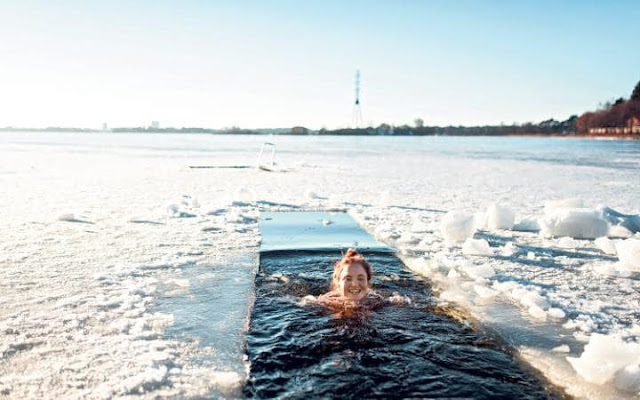My Fulbright buddy Petteri guided me through my first experience with a local Finnish sauna. I didn't want some hoity-toity fancy spa, but rather preferred to go sauna "like the locals do". My time last night did not disappoint. The sauna house was located a few trams stops from my apartment, cost 12 euros, and although Petteri warned me that the place could be "a bit rough around the edges" I thought it was a perfect introduction and worth every cent. You start by washing off, then you go into a large sealed room (this one was concrete, others are wood) containing a massive wood heated oven with a hole at the top. When the mood strikes, someone ladles water through the hole and it falls on the hot rocks below which then give off steam. Instantly, the temperature surges and you feel a blast of heat; the higher up you sit, the hotter it is. I asked Petteri about how hot he thought last night's sauna was, and he estimated about 80 deg C (about 180 deg F) so that's pretty hot! After 5 to 10 minutes you step out, have a cool drink, maybe move outside for a bit of crisp frozen breeze, and then go back in and repeat the process until you feel fully done/clean/relaxed. Side note: Finland has a world championships sauna competition where the
starting temp is 110 C (230 F) and the competitors see who can stay in the longest (the last person to leave
unaided is the winner)! In 2010 a Russian finalist died after 6 minutes in this heat. Needless to say, I don't plan on signing up for this any time soon.
Sauna is an integral part of the way of life in Finland, and the practice dates back many thousands of years. For many Finns, sauna is revered, even a holy place. Some Finns prefer to be very quiet and meditational, others find it a great place to discuss sports, politics, and even conduct business. It is estimated that there are roughly 2 million saunas in Finland for a population of 5.3 million people!
I am quite sure that I will be going to sauna a few more times before I head home in April!
 |
| Public sauna |
 |
| In a sauna, water is poured with the ladle onto the hot rocks to give off steam |
 |
| Some Finns use birch leaves to soften the skin and give off a fragrance |
 |
| The truly bold will jump in frozen water between sauna sessions to cool off (haven't tried this yet but plan to!). |







































